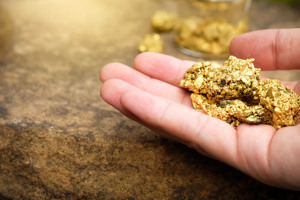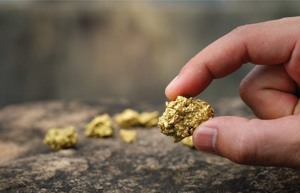Tavex uses cookies to ensure website functionality and improve your user experience. Collecting data from cookies helps us provide the best experience for you, keeps your account secure and allows us to personalise advert content. You can find out more in our cookie policy.
Please select what cookies you allow us to use
Cookies are small files of letters and digits downloaded and saved on your computer or another device (for instance, a mobile phone, a tablet) and saved in your browser while you visit a website. They can be used to track the pages you visit on the website, save the information you enter or remember your preferences such as language settings as long as you’re browsing the website.
| Cookie name | Cookie description | Cookie duration |
|---|---|---|
| tavex_cookie_consent | Stores cookie consent options selected | 60 weeks |
| tavex_customer | Tavex customer ID | 30 days |
| wp-wpml_current_language | Stores selected language | 1 day |
| AWSALB | AWS ALB sticky session cookie | 6 days |
| AWSALBCORS | AWS ALB sticky session cookie | 6 days |
| NO_CACHE | Used to disable page caching | 1 day |
| PHPSESSID | Identifier for PHP session | Session |
| latest_news | Helps to keep notifications relevant by storing the latest news shown | 29 days |
| latest_news_flash | Helps to keep notifications relevant by storing the latest news shown | 29 days |
| tavex_recently_viewed_products | List of recently viewed products | 1 day |
| tavex_compare_amount | Number of items in product comparison view | 1 day |
| Cookie name | Cookie description | Cookie duration |
|---|---|---|
| chart-widget-tab-*-*-* | Remembers last chart options (i.e currency, time period, etc) | 29 days |
| archive_layout | Stores selected product layout on category pages | 1 day |
| Cookie name | Cookie description | Cookie duration |
|---|---|---|
| cartstack.com-* | Used for tracking abandoned shopping carts | 1 year |
| _omappvp | Used by OptinMonster for determining new vs. returning visitors. Expires in 11 years | 11 years |
| _omappvs | Used by OptinMonster for determining when a new visitor becomes a returning visitor | Session |
| om* | Used by OptinMonster to track interactions with campaigns | Persistent |
| Cookie name | Cookie description | Cookie duration |
|---|---|---|
| _ga | Used to distinguish users | 2 years |
| _gid | Used to distinguish users | 24 hours |
| _ga_* | Used to persist session state | 2 years |
| _gac_* | Contains campaign related information | 90 days |
| _gat_gtag_* | Used to throttle request rate | 1 minute |
| _fbc | Facebook advertisement cookie | 2 years |
| _fbp | Facebook cookie for distinguishing unique users | 2 years |
Can Plants Really Grow Gold? (Phytomining)

Have you every heard of plants growing gold? Sounds unrealistic however, this concept, known as phytomining, is a very real and innovative approach to metal extraction.
Phytomining uses certain types of plants to absorb metals like gold from the soil. Instead of traditional, destructive mining methods, plants do the hard work of extracting valuable metals from the earth.
So, can plants really grow gold? Let’s explore this.
The Science Behind Phytomining
Phytomining relies on the natural ability of plants to absorb and store metals
Some plants, called hyperaccumulators, have evolved to take in unusually high concentrations of metals through their roots.
These metals are then stored in the leaves and stems. While many plants can absorb metals like nickel or cobalt, there are specific hyperaccumulators capable of absorbing gold, albeit in small amounts.
How Plants Absorb Metals

Plants absorb nutrients and metals through their roots from the soil or water. In phytomining, scientists identify areas where gold is present in low concentrations.
Plants grown in this soil gradually absorb gold particles, which are stored within their tissues
Over time, these plants accumulate enough metal to be harvested and processed.
Types of Plants Used in Phytomining
Certain plants are better suited for phytomining than others. Some examples of hyperaccumulator plants include Brassica juncea (Indian mustard), Alyssum murale, and Berkheya coddii. These species are particularly good at absorbing metals like nickel, cobalt, and even gold.
Can Plants Really Grow Gold?

The idea of plants “growing” gold might seem like a tall tale, but it’s actually grounded in reality. Hyperaccumulator plants can absorb trace amounts of gold from the soil.
While they won’t grow gold nuggets or leaves covered in gold dust, the gold they do absorb can be extracted and refined into usable metal.
The Concept of Hyperaccumulators
Hyperaccumulators are plants that thrive in soils with high metal concentrations
When exposed to soils containing metals like gold, these plants absorb the particles and store them in their cells. Though the amounts of gold are small, repeated cycles of growing, harvesting, and processing these plants can lead to meaningful amounts of gold.
Real-Life Examples of Plants Accumulating Gold

In Australia, scientists have studied plants like Eucalyptus trees that absorb gold from the soil through their roots. Tiny gold particles can even be found in their leaves. This discovery suggests that plants in areas with gold deposits can be used to identify gold-rich soils, making phytomining a viable method of extraction.
The Process of Phytomining
Phytomining involves several steps that allow plants to absorb, store, and release metals like gold. Here’s how the process works:
- Site Identification: Researchers identify areas where gold is present in low concentrations.
- Planting: Hyperaccumulator plants are grown in the soil, where they begin to absorb gold.
- Harvesting: Once the plants have absorbed enough metal, they are harvested.
- Burning and Processing: The plants are burned to ash, which is then processed to extract the metals, including gold.
This cycle can be repeated, making phytomining a sustainable option for metal extraction.
Environmental Benefits of Phytomining

One of the biggest advantages of phytomining is its low environmental impact. Unlike traditional mining, which often causes deforestation, soil degradation, and water pollution, phytomining uses plants to clean the soil while extracting valuable metals. This method also reduces the need for harmful chemicals like cyanide, often used in gold mining.
Phytomining and Soil Remediation
In addition to extracting metals, phytomining can be used for soil remediation—the process of removing harmful contaminants from the soil. Hyperaccumulator plants not only absorb metals but can also help restore ecosystems damaged by mining and industrial activities.
Economic Feasibility of Phytomining
While phytomining offers environmental benefits, its economic feasibility remains a key question. The process is slower than traditional mining, and the concentration of gold in plants is much lower than in ores.
However, as the demand for eco-friendly alternatives grows, phytomining could become more attractive to both governments and industries.
Types of Metals Extracted Through Phytomining

While gold is one of the most valuable metals that can be extracted through phytomining, it’s not the only one. Plants can also be used to mine nickel, cobalt, and zinc, making phytomining a versatile solution for extracting a variety of metals.
Future Potential of Phytomining
As concerns about climate change and environmental degradation continue to grow, phytomining could play a crucial role in the future of sustainable mining.
Scaling up phytomining operations could allow industries to meet the growing demand for metals without causing further harm to the planet.
Phytomining and Climate Change
Phytomining not only reduces the environmental damage caused by mining but also contributes to carbon sequestration. The plants used in phytomining absorb carbon dioxide from the atmosphere, helping to mitigate climate change, even though just in a small way.
Challenges in Phytomining
Despite its promise, phytomining faces several challenges. The slow accumulation rates of metals and the low concentration of gold in plants make it difficult to scale phytomining for industrial use. However, ongoing research is exploring ways to overcome these limitations.
Success Stories in Phytomining
There are several success stories in the world of phytomining. For example, research projects in Australia have demonstrated the potential of eucalyptus trees to absorb gold, while phytomining efforts in Southeast Asia have successfully extracted nickel using hyperaccumulator plants.
Conclusion
Phytomining offers a glimpse into the future of sustainable metal extraction of precious metals. While plants won’t be growing gold nuggets anytime soon, the potential for extracting valuable metals in an environmentally friendly way is real.
With continued research and support, phytomining could revolutionise the mining industry and contribute to a greener, more sustainable world.



















